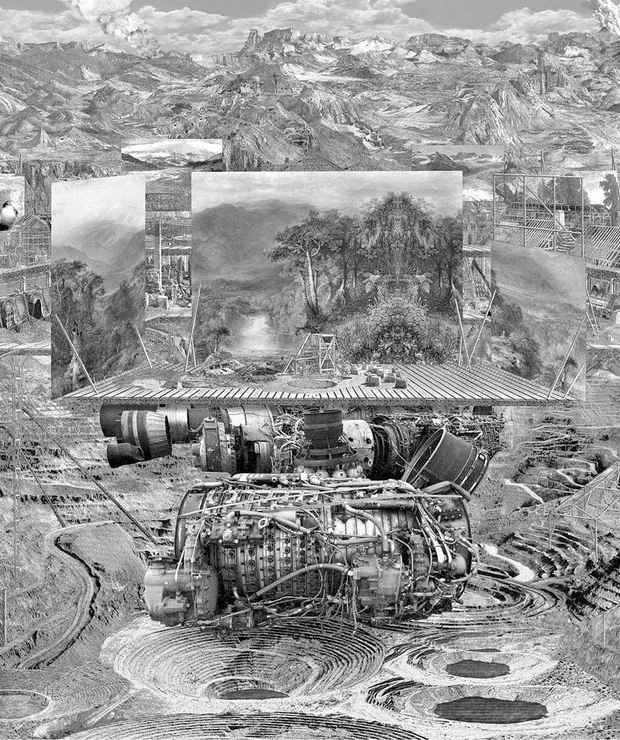Dean Byington “The New City”
Leslie Tonkonow Artworks + Projects

This event has ended.
In his newest works, Dean Byington presents vast urban landscapes shaped by imagined history. Contemplating the defining global issues of our time, he invents new cities in which culture and nature collide outside of time.
The exhibition, our fourth one-person presentation of works by the artist, includes seven oil paintings made since 2013. Executed in black, white, and shades of gray, they feature an impossibly dense profusion of architectural images within classically sublime landscapes.
In the late 1990s, Byington began to combine his interests in eighteenth- and nineteenth-century prints and book illustrations with digital and photomechanical processes, evolving a complex, multi-layered method for creating oil paintings on canvas that simultaneously recall minimalist painting, surrealist collage, and the assemblage and psychedelic aesthetic of the 1950s and 1960s in the San Francisco Bay area where he lives and works.
Having trained himself to draw in the archaic style of old etchings and wood engravings, Byington collages invented and appropriated images to produce silk screens that are used to transfer the underlying imagery of his paintings on to finely prepared linen canvases. He completes each work by re-painting, glazing, scraping, over-painting, and varnishing.
Carter Foster, Curator of Drawings at the Whitney Museum of American Art, has likened his involvement with surface and production to an earlier generation of California-based artists:
“One also thinks of the ‘finish-fetish’ work of John McCracken or the ceramist/sculptor Ken Price, both obsessive in their use of surface density to create optically captivating art. Byington’s method has parallels to theirs in that the final product is a summation of many layers of production.”
In the most recent paintings, Byington has chosen to forego the explicit stories of his earlier works, inspired by childhood recollections of playing on abandoned TV and movie sets in Culver City, familial history, and the seventeenth-century fables of Jean de La Fontaine in favor of a more nuanced narrative enacted through disparate architectural styles, time periods, and references to art history.
In the center of Saturn (2015), three “billboards” depicting portions of Frederic Edwin Church’s monumental Romantic landscape painting of 1859, The Heart of the Andes, appear on a stage-like platform constructed of jet engine parts, set within a tortured landscape pockmarked by vast craters and rocky crags with billowing smoke and clouds in the distant sky.
For the first time, there is a horizontal orientation in most of Byington’s works and he appropriates photographic images within his compositions. He has also decided to eliminate the pastel monochrome palette and accented color he frequently employed in the past. For Byington, working in black and white eliminates the seduction of color, increases his focus on subject matter, and directly references his early interests in black and white photography and photomechanical reproduction.
Media
Schedule
from May 16, 2015 to July 17, 2015
Opening Reception on 2015-05-16 from 18:00 to 20:00
Reception and Book Signing